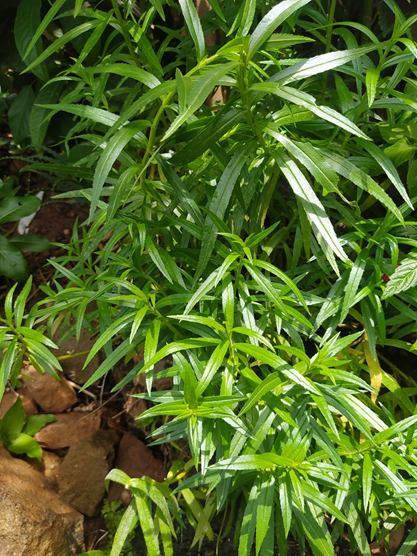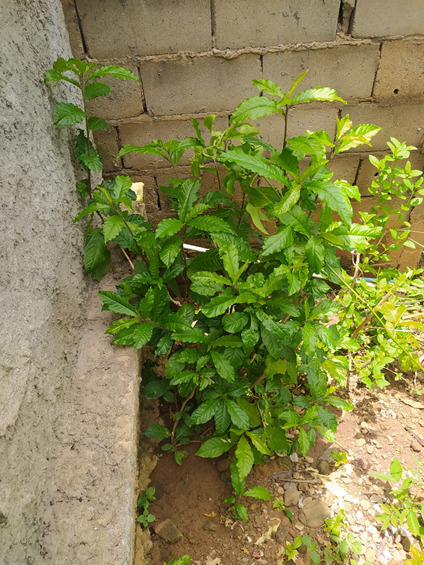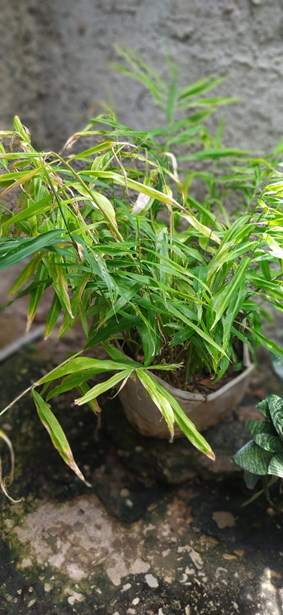
Saludos mis atentos amigos de #hive que espero la estén pasando bien desde sus casas, el día de hoy quiero compartirles un poco haciéndole descripción a las plantas de uso medicinal cultivadas en el humilde jardín de mi casa, les traigo una información acerca de las más buscadas en épocas de lluvia por mis vecinos y familiares, debido a que posee propiedades excelentes para la tos con flema, gripe ect…
Greetings my attentive friends of #hive I hope you are having a good time from your homes, today I want to share with you a little description of the medicinal plants grown in the humble garden of my house, I bring you information about the most sought after in times of rain by my neighbors and family, because it has excellent properties for cough with phlegm, flu ect....

El tilo, curibano, carpintero, curia o piri piri (Justicia pectoralis) es una hierba utilizada por la medicina tradicional, que le atribuye efectos como desinfectante, cicatrizante, sedante, relajante de los músculos lisos, expectorante, analgésico, antioxidante, y astringente, entre otros. Estudios científicos indican que preparados de esta hierba pueden tener efectos antiinflamatorios y relajantes que ayudan a aliviar la gripe. En Cuba ha sido usada por los servicios de salud.
Para mayores beneficios podemos bañar las hojas en agua para utilizarla como antipirético, también hacer inhalaciones de la infusión del tallo y las hojas sirven como analgésico.
Linden, curibano, carpenter, curia or piri piri (Justicia pectoralis) is an herb used by traditional medicine, which attributes to it effects such as disinfectant, healing, sedative, smooth muscle relaxant, expectorant, analgesic, antioxidant, and astringent, among others. Scientific studies indicate that preparations of this herb can have anti-inflammatory and relaxing effects that help relieve the flu. In Cuba it has been used by the health services.
For greater benefits we can bathe the leaves in water to use it as an antipyretic, also make inhalations of the infusion of the stem and the leaves serve as an analgesic.

Esta plantita es fácil de sembrar y conseguir, es una planta de sol que abunda en sitios cercanos a los cerros y montañas como monte, se reconoce por su florecita que puede ser morada o blanca y lo alargado de su hoja con ciertas pelusitas que la hacen pegajosa, una de las propiedades que más caracteriza a esta planta es que se utiliza como calmante de la tos, cansancio respiratorio, gripes mal curadas, asma, etc…
This little plant is easy to plant and get, it is a sun plant that abounds in places near the hills and mountains as mount, it is recognized by its little flower that can be purple or white and the elongated of its leaf with certain hairs that make it sticky, one of the properties that characterizes this plant is that it is used as a soothing cough, respiratory fatigue, badly cured flu, asthma, etc ....
¿COMO CUIDAR LA PLANTA ANGELONIA?
HOW TO CARE FOR ANGELONIA PLANT?
Requiere de riegos profusos para obtener una cuantiosa floración, sobre todo en épocas de calor; para el resto del año hay que dejar que el suelo se seque ligeramente entre un riego y otro. Una vez que la planta está suficientemente establecida, puede resistir pequeños periodos de sequía.
It requires profuse watering to obtain a large flowering, especially in hot periods; for the rest of the year it is necessary to let the soil dry slightly between watering. Once the plant is sufficiently established, it can withstand short periods of drought.

De nombre científico Petiveria Alliacea, se trata de una planta con gran poder medicinal, propiamente encontrada en toda América y en este caso en mi jardín, las propiedades del mapurite tienen un alto valor y nivel medicinal, sobre todo en potenciales experimentos contra el cáncer. Es una planta ampliamente demandada debido a las capacidades naturales medicinales en patologías del sistema endocrino, en sí, es una planta fácilmente identificable debido a su color verde intenso y un hedor similar al ajo. Así mismo, es capaz de alcanzar hasta 2 metros de altura en zonas donde aproveche mejor los nutrientes. El mapurite, actualmente, es altamente comercializado e inclusive, es hasta vendido en forma de tabletas o pastillas. Cada vez, son más las personas que se preguntan dónde comprar mapurite debido a las referencias escuchadas. Pero, ¿qué tienen de beneficiosas sus propiedades?
Bueno Cabe resaltar que tiene propiedades anticancerígenas, propiedades del sistema endocrino, propiedades reguladoras del sistema circulatorio.
El mapurite es un compuesto natural que, dosificado de la manera adecuada, previene la aparición de enfermedades peligrosas. Por lo tanto, es un compuesto aliado de la medicina natural, las propiedades del mapurite abarcan una buena cantidad de sistemas importantes en el organismo. Dicho de otra manera, es una medicina que contribuye a mantener sano nuestro cuerpo, los compuestos inmersos dentro del mapurite, ayudan a la prevención de inflamación, dolores articulares y musculares. De igual manera, aportan una serie de nutrientes claves en el desarrollo humano.
Scientific name Petiveria Alliacea, it is a plant with great medicinal power, properly found throughout America and in this case in my garden, the properties of mapurite have a high value and medicinal level, especially in potential experiments against cancer. It is a plant widely demanded due to its natural medicinal capabilities in pathologies of the endocrine system, in itself, is a plant easily identifiable due to its intense green color and a stench similar to garlic. Likewise, it is capable of reaching up to 2 meters in height in areas where it takes better advantage of nutrients. Mapurite is currently highly commercialized and is even sold in tablet or pill form. More and more people are asking where to buy mapurite because of the references heard. But, what are the benefits of its properties?
Well, it is worth mentioning that it has anti-cancer properties, endocrine system properties, circulatory system regulating properties.
Mapurite is a natural compound that, dosed in the right way, prevents the onset of dangerous diseases. Therefore, it is an allied compound of natural medicine, the properties of mapurite cover a good number of important systems in the organism. In other words, it is a medicine that contributes to keep our body healthy, the compounds immersed in mapurite help to prevent inflammation, joint and muscle pain. They also provide a series of key nutrients for human development.

El jengibre o kion es una planta de la familia de las zingiberáceas, cuyo tallo subterráneo es un rizoma horizontal muy apreciado por su aroma y sabor picante.
¿Cuánto tiempo tarda en crecer el jengibre?
Las raíces del jengibre tardan más o menos unos 10 meses en crecer, momento en que serán comestibles. Lo importante es que cuando tú veas que han crecido tallos y hojas fuertes, deja pasar unas dos semanas más. Entre las propiedades medicinales del Jengibre tenemos:
El jengibre tiene propiedades antivirales y ayuda a combatir los virus, es de utilidad para dolencias del aparato respiratorio, como infecciones, bronquitis, tos, gripes, etc… También posee propiedades antiinflamatorias y analgésicas, por lo que es perfecto contra la artritis.
El jengibre posee otras funciones importantes como:
aliviar las náuseas.
contribuir a la pérdida de apetito.
contrarrestar el mareo y el dolor.
mejorar la digestión.
combatir una gripe.
reducir dolores musculares (anti-inflamatorio)
prevenir accidentes cardiovasculares.
Ginger or kion is a plant of the zingiberaceae family, whose subway stem is a horizontal rhizome highly valued for its spicy aroma and flavor.
How long does ginger take to grow?
Ginger roots take about 10 months to grow, at which time they become edible. The important thing is that when you see that they have grown strong stems and leaves, let about two more weeks pass. Among the medicinal properties of ginger we have:
Ginger has antiviral properties and helps fight viruses, it is useful for respiratory tract ailments, such as infections, bronchitis, coughs, flus, etc... It also has anti-inflammatory and analgesic properties, so it is perfect against arthritis.
Ginger has other important functions such as:
relieving nausea.
contribute to the loss of appetite.
counteract dizziness and pain.
improve digestion.
to fight a flu.
reduce muscular pains (anti-inflammatory).
prevent cardiovascular accidents.
Espero les haya gustado este pequeño análisis de lo beneficiosas que pueden ser las plantas medicinales que están cultivadas en el jardín de mi casa, cultivadas por mi madre con mi ayuda hace un tiempo atrás, estas plantas o hiervas en algunos momentos son la cura para algunas de nuestras enfermedades, en una próxima oportunidad quiero mostrarles cómo hacer una #medicinanatural (té) con algunas de estas plantas o hiervas.
I hope you liked this little analysis of how beneficial can be the medicinal plants that are grown in the garden of my house, grown by my mother with my help some time ago, these plants or herbs in some moments are the cure for some of our diseases, in a next opportunity I want to show you how to make a #medicinanatural (tea) with some of these plants or herbs.
Gracias por leerme
La publicación y fotografías son de mi autoría.
Tomadas por mi
Teléfono: Xiaomi Redmi Note 8
Traducción: deepl
Originally posted here: https://hive.blog/hive-120078/@marcel04/espeng-milagrosas-plantas-medicinales-de-mi-humilde-jardin-miraculous-medicinal-plants-from-my-humble-garden
No comments:
Post a Comment